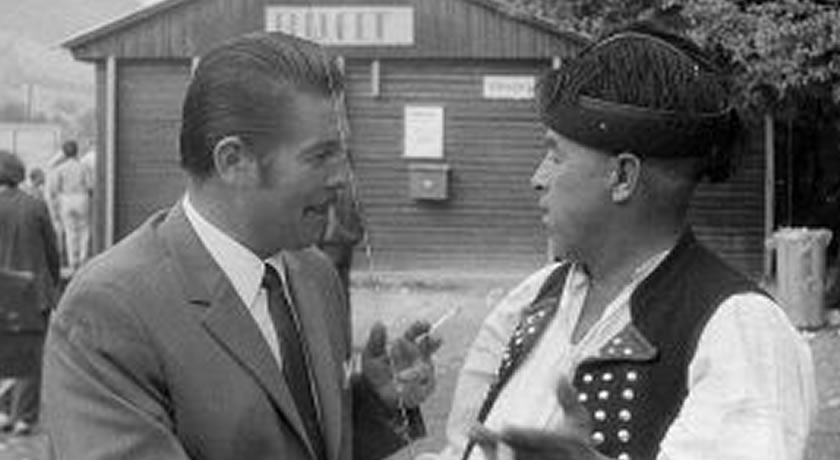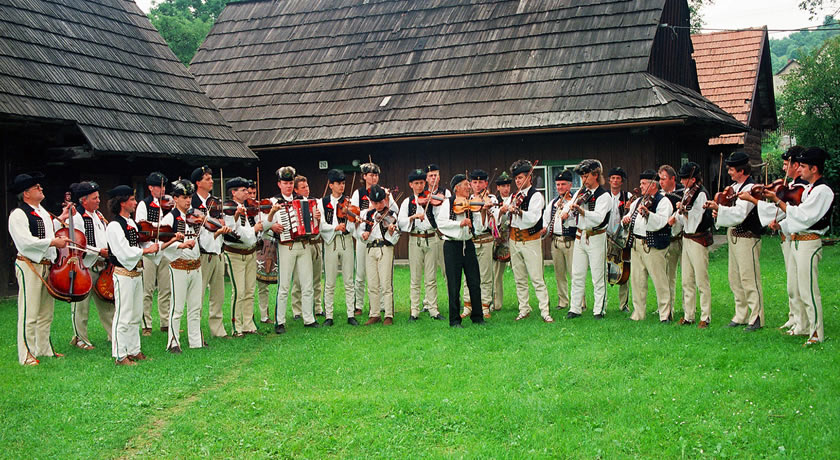The phenomenon of beautiful nature in the picturesque scenery of Malá Fatra is strongly reflected in the rich culture and traditions of the region. Moreover, it is also famous for the national hero Juraj Jánošík and the renowned music of Terchová. Many elements have been preserved from the times of the Wallachian colonization. To this day, visitors to this area admire the work of shepherds on sheep farms. Arduous daily work and rough living conditions in harmony with the beautiful scenery are reflected in the Terchová folk art. Its tangible artifacts can be found in each settlement in the form of picturesque log houses, carved crosses on the roads, wooden Bethlehem in Terchová, statues, sculptures, paintings, equipment of every household, folk fashion and gastronomy. Expressions of the spiritual can be seen, heard and experienced at numerous events, celebrations and festivals. The local folklore is characterized by original polyphonic singing and temperamental dancing. The old customs are still kept up, so on special occasions you may encounter carolers, three kings, carnival costumes, decorated horse carriages, bandits with valaškas (shepherd´s axes) and guns, musicians from Terchová on Oravcové Hill, marching of mysterious Lucias, or even an epic historical reconstruction of the Passion of Christ.
TRADITIONS OF MALA FATRA:
The dialect of Terchová belongs to the group of central Slovak dialects and it is very similar to the Orava dialect. It is renowned for being funny and has its own small bilingual dictionary (Terchová dialect - Slovak) containing...
It is still possible to admire the traditional folk costumes at numerous events in Terchová and its surroundings. Male costume consisted of: a shirt without embroidery with a stand-up collar, white linen pants with two slits, a belt, a vest...
It is said that there are the most musicians and singers per square meter in Terchová. This is evidenced by the fact that in each house there is a musician, and each of the settlements used to have its...
The Fatra culture is inextricably linked to shepherds and sheep-farming since the 15th century, when the territory of the region was colonized by the Vlachs who easily integrated into the local population. It is possible for a visitor to...





